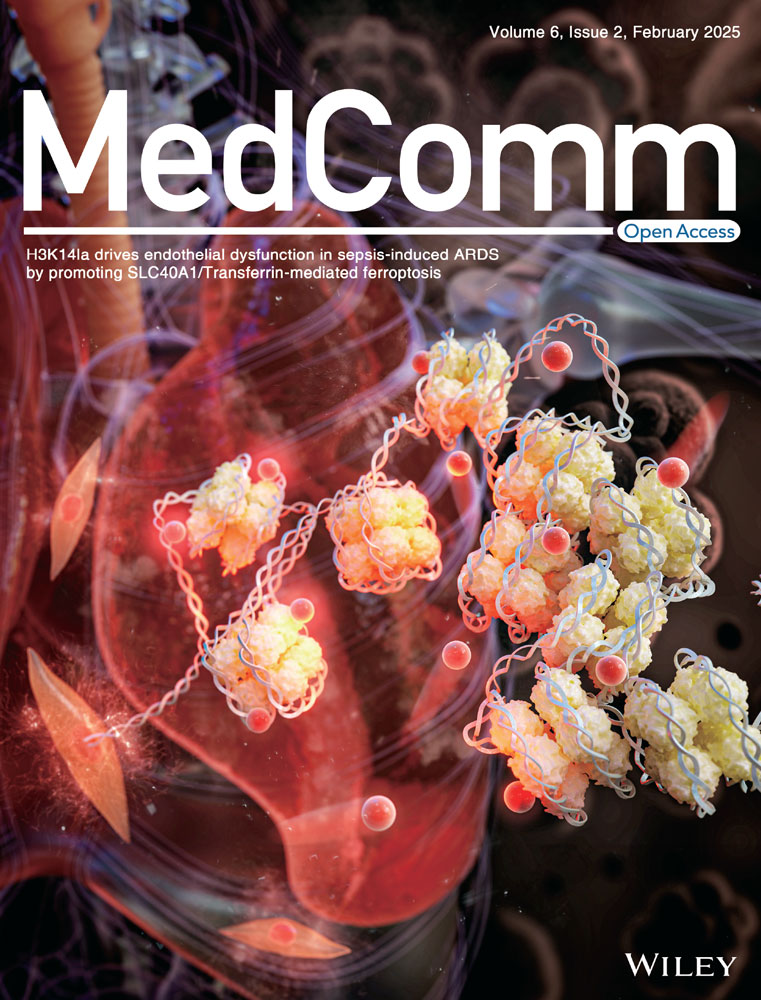A novel allosteric driver mutation of β-glucuronidase promotes head and neck squamous cell carcinoma progression through STT3B-mediated PD-L1 N-glycosylation
Zhonglong Liu and Xiaoyan Meng contributed equally to this work.
Abstract
Head and neck squamous cell carcinoma (HNSCC) develops and advances because of the accumulation of somatic mutations located in orthosteric and allosteric areas. However, the biological effects of allosteric driver mutations during tumorigenesis are mostly unknown. Here, we mapped somatic mutations generated from 10 tumor-normal matched HNSCC samples into allosteric sites to prioritize the mutated allosteric proteins via whole-exome sequencing and AlloDriver, identifying the specific mutation H351Q in β-glucuronidase (GUSB), a lysosomal enzyme, as a novel allosteric driver mutation, which considerably encouraged HNSCC progression both in vitro and in vivo. Mechanistically, the allosteric mutation of H351Q remarkably attenuated protein trafficking from the endoplasmic reticulum (ER) to lysosomes, leading to ER retention, in which GUSB-H351Q facilitated the aberrant N-glycosylation of PD-L1 through increasing protein stability and mRNA transcripts of the STT3 oligosaccharyltransferase complex catalytic subunit B, an oligosaccharyltransferase complex. Moreover, GUSB-H351Q reshaped a more immunosuppressive microenvironment featuring increased infiltration of exhausted CD8+ T cells and remodeled tumor metabolism, characterized by increased activity of the purine metabolism pathways and pyruvic acid accumulation. This study provides a mechanism-driven approach to overcoming HNSCC progression and immune evasion and identifies novel druggable targets based on the presence of GUSB allosteric driver mutation.
CONFLICT OF INTEREST STATEMENT
The authors declare no conflicts of interest.
Open Research
DATA AVAILABILITY STATEMENT
The raw data of WES generated in this study were deposited in Genome Sequence Archive (GSA) with accession ID HRA007967 and the raw data of bulk RNA-seq of human HNSCC cell lines were deposited in GSA with accession ID HRA008941. Since these data are related to human genetic resources, raw data can be obtained directly by requesting and following the GSA guidelines for academic use at https://ngdc.cncb.ac.cn/gsa-human/browse/HRA007967 and https://ngdc.cncb.ac.cn/gsa-human/browse/HRA008941 after the user log in to the GSA database with the email address of the academic institution. The request will be responded within 2 weeks. Once access is granted, users have 6 months to download the data. The guidance for making a data access request of GSA for humans can be downloaded from https://ngdc.cncb.ac.cn/gsa-human/document/GSA-Human_Request_Guide_for_Users_us.pdf. Other relevant data are within the manuscript and its additional files, and are available from the corresponding author upon reasonable request.




